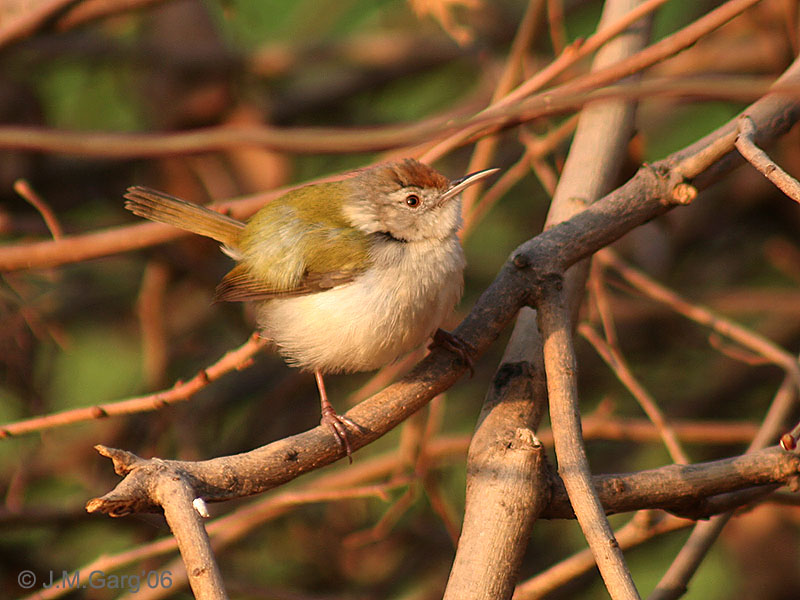|
| Query: bird | Result: 3455th of 32675 | |
Tailorbird (Family: Sylviidae, Genus: Orthotomus) - Wiki
| Subject: | Tailorbird (Family: Sylviidae, Genus: Orthotomus) - Wiki
| |

| Resolution: 800x600
File Size: 126942 Bytes
Date: 2006:02:04 07:59:53
Camera: Canon EOS 350D DIGITAL (Canon)
F number: f/5.6
Exposure: 1/125 sec
Focal Length: 300/1
Upload Date: 2007:10:26 15:00:12
|
Tailorbird
From Wikipedia, the free encyclopedia
[Photo] Common Tailorbird (Orthotomus sutorius) at Hodal in Faridabad District of Haryana, India. Date 4.02.06. Author J.M.Garg (http://commons.wikimedia.org/wiki/User:J.M.Garg) Copyright (C) 2006 J. M. Garg
Permission is granted to copy, distribute and/or modify this document under the terms of the GNU Free Documentation License, Version 1.2 or any later version published by the Free Software Foundation; with no Invariant Sections, no Front-Cover Texts, and no Back-Cover Texts. A copy of the license is included in the section entitled "GNU Free Documentation License". |
Tailorbirds are small birds belonging to the genus Orthotomus of the Old World warbler family Sylviidae. Recent research though suggests they more likely belong in the Cisticolidae with perhaps one species (Mountain Tailorbird) actually closer to an old world warbler genus Cettia.
Tailor birds occur in the Old World tropics, principally in Asia.
These warblers are usually brightly coloured, with green or grey uppperparts and yellow white or grey underparts. They often have chestnut on the head.
Tailorbirds have short rounded wings, short tails, strong legs and long curved bills. The tail is typically held upright, like a wren. They are typically found in open woodland, scrub and gardens.
Tailorbirds get their name from the way their nest is constructed. The edges of a large leaf are pierced and sewn together with plant fibre or spider's web to make a cradle in which the actual grass nest is built.
The species are:
African Tailorbird, Orthotomus metopias
Long-billed Tailorbird, Orthotomus moreaui
Mountain Tailorbird, Orthotomus cuculatus
Common Tailorbird, Orthotomus sutorius
Rufous-headed Tailorbird, Orthotomus heterolaemus
Dark-necked Tailorbird, Orthotomus atrogularis
Philippine Tailorbird, Orthotomus castaneiceps
Rufous-fronted Tailorbird, Orthotomus frontalis
Grey-backed Tailorbird, Orthotomus derbianus
Rufous-tailed Tailorbird, Orthotomus sericeus
Ashy Tailorbird, Orthotomus ruficeps
Olive-backed Tailorbird, Orthotomus sepium
Yellow-breasted Tailorbird, Orthotomus samarensis
White-browed Tailorbird, Orthotomus nigriceps
White-eared Tailorbird, Orthotomus cinereiceps
http://en.wikipedia.org/wiki/Tailorbird
| The text in this page is based on the copyrighted Wikipedia article shown in above URL. It is used under the GNU Free Documentation License. You may redistribute it, verbatim or modified, providing that you comply with the terms of the GFDL. |
|
^o^
Animal Pictures Archive for smart phones
^o^
|
|

